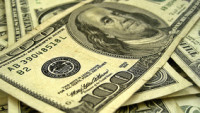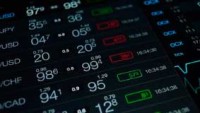 The SNB has trimmed the policy rate by 0.25%, in line with market consensus and our own pre-announcement call.
The SNB has trimmed the policy rate by 0.25%, in line with market consensus and our own pre-announcement call.
That said, while a decision to cut rates was never in doubt, some market participants had speculated that the SNB could deliver 50bps of easing in this latest policy decision. Considering that guidance on FX interventions also remained unchanged, markets have interpreted today’s decision as hawkish at the margin – an outcome that has seen a modest uptick for CHF immediately post announcement.
While this latest decision might skew hawkish relative to market expectations on first viewing, we are a little more circumspect in our view of the SNB’s forward looking policy stance.
First, the Bank’s inflation forecasts saw a sharp downgrade, as we had expected. SNB projections, contingent on a policy rate of 1.0% now see inflation at 1.0% YoY in Q4 2024, and 0.5% in Q4 2025. They had previously forecast price growth of 1.4% and 1.1% over the same periods, assuming a policy rate of 1.25%. This is a clear signal that more rate cuts should be in the pipeline, provided inflation continues to soften in line with SNB expectations.
With inflation now expected to track just above 0% for an extended period, the risk of outright deflation warrants further easing.
Given this, the Bank’s forecasts also place today’s decision not to cut by a larger amount under a spotlight. We suspect that the decision to cut by 25bps and not 50bps, was driven as much by concerns around the limited policy space operating so close to the effective lower bound, and not by the Bank’s view on the likely path for price growth. Indeed, SNB Chair Jordan alluded to this in his press conference as a factor underpinning today’s decision. Granted, Jordan also signalled that the Bank does not see outright deflation as a risk at present, while the Bank’s growth forecasts remained unchanged at 1.0% for 2024, and 1.5% for 2025.
But we see downside risks to both, especially if the franc continues to trade around current levels against the euro, and if the eurozone drops into contraction in the coming months as signalled by recent PMI figures.
As such, while Jordan noted that “Further cuts in the SNB policy rate may become necessary in the coming quarters to ensure price stability over the medium term”, we think it is only a matter of time before the Governing Board resorts to easing via the FX channel. Only a marginal undershoot relative to current inflation projections would take the EURCHF rate from being just uncomfortable, to warranting action given the constrained room for manoeuvre on policy rates. For this reason, we are inclined to discount the unchanged language on FX interventions in this latest round of communications. Rather, we place more weight on an answer by Jordan in his press conference, hinting that the SNB would push back against further CHF strength, as an indication that FX interventions are closer than they might appear at face value.
All told, we continue to think the SNB will ease rates by 25bps again in December, and in March next year.
But with most G10 central banks likely to ease faster, tightening rate differentials are likely to necessitate interventions to stabilise the franc in the first instance, and likely weaken CHF at the margin over the medium term. With this in mind, we continue to expect EURCHF to trade higher in the coming months. While that might not see the cross hit our short-term target of 0.96 by month end, we continue to see 0.98 as a reasonable expectation by Christmas, with a break of parity likely in the first half of 2025.












